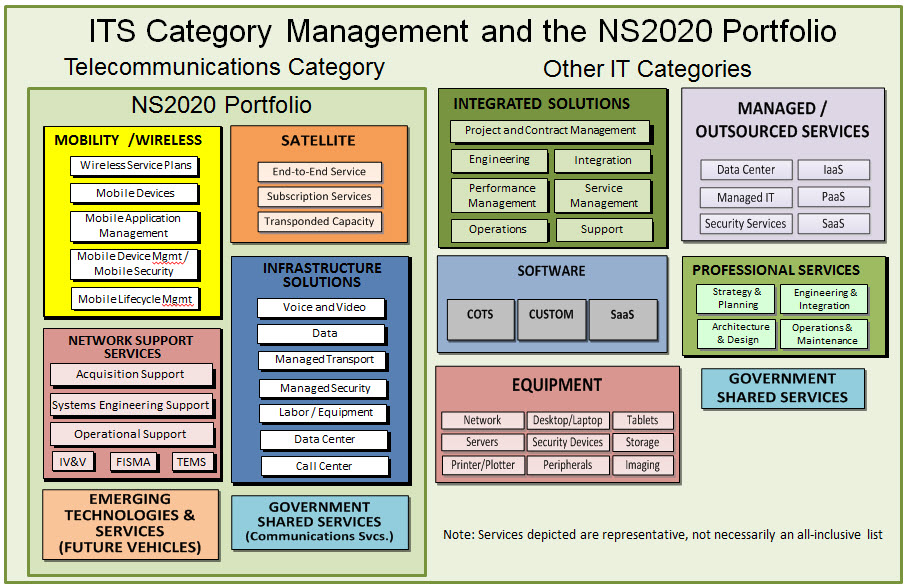GSA’s Office of Information Technology Category (ITC) received some exciting news at the end of Fiscal Year (FY) 2017: five more of GSA’s Governmentwide Acquisition Contracts (GWACs) and one Blanket Purchase Agreements (BPA) based on IT Schedule 70 SIN 132-53 have been designated by the Office of Management and Budget (OMB) as “Best-in-Class” (BIC).
BIC designations signal to the acquisition community that these vehicles meet rigorous category management performance criteria and confirm that we’re offering solutions and processes necessary to meet government’s IT requirements not just today, but well into the future.
The six new additions to ITC’s BIC offerings are all pre-vetted, governmentwide contract solutions supporting the governmentwide move to mature, market-proven solutions:
- Alliant is a multiple-award Indefinite Delivery, Indefinite Quantity Contracts (IDIQ) designed to provide flexible access to customized IT solutions.
- Alliant Small Business (SB) is a multiple-award IDIQ small business set-asides also designed to provide flexible access to customized IT solutions from qualified small business firms.
- Veterans Technology Services (VETS 2) is a multi-award IDIQ service-disabled, veteran-owned small business (SDVOSB) set-aside providing access to customized IT solutions from qualified SDVOSB firms. And the VETS 2 GWAC was just awarded to 70 highly qualified Service-Disabled, Veteran-Owned Small Businesses (SDVOSB).
- Alliant 2 / Alliant 2 SB are multiple-award IDIQs designed to provide flexible access to customized IT solutions. Both are expected to be awarded in November and December, respectively.
- Lastly, the BPA Federal Strategic Sourcing Initiative (FSSI) Wireless consolidates multiple wireless services, plans, and devices into one program.
With these additions, GSA has a total of eight BIC IT offerings—our Government-wide Strategic Solution (GSS) Laptop/Desktop and IT Schedule 70’s Hardware & Software SINs were part of the first group OMB recognized in the IT category.
We see these new BIC designations, as proof that GSA is developing the programs and contracts that will shape and lead future IT category management efforts. What’s more, they’re evidence that we use taxpayer funds efficiently and productively, enabling our customers to better fulfill their missions.
BIC Benefits
How does BIC benefit government agencies?
BIC contracts are recognized as being “good-for-government” purchasing solutions which should be used by all agencies. To be named BIC, contract vehicles must satisfy five key criteria defined by OMB:
- Rigorous requirements definitions and planning processes
- Appropriate pricing strategies
- Data-driven strategies to change buying and consumption behavior (i.e., demand management)
- Category and performance management strategies
- Independently validated reviews
BIC GWACs
Alliant, Alliant SB, and VETS 2 GWACs offer fixed-price, cost-reimbursement, labor-hour, and time-and-materials task order types, providing greater flexibility in procuring a broad range of IT services. These solutions provide access to new and emerging technologies designed to help government agencies meet their mission requirements. Our BIC GWACS can also help agencies save between 4 percent and 19 percent on average. Again, GSA expects to award the second iteration of Alliant and Alliant SB (Alliant 2 and Alliant 2 SB, respectively), by the end of the calendar year.
BIC BPA
Our FSSI Wireless BPAs are based in GSA’s IT Schedule 70 SIN 132-53, which improves the procurement and management of wireless services across government. And the good news is that the market opportunity for government wireless services is currently estimated to be $945 million annually.
Going Forward
These BIC designations let agencies and industry know we are meeting our own high standards of customer service and acquisition expertise. Whether they are using contracts officially recognized as “Best-in-Class” or another solution, our customers and partners can expect the same quality and excellence in all of our products and services. As I wrote in an earlier blog, “We believe a BIC designation is not the end state, but rather an important milestone on a journey to help agencies improve their buying strategies.”
Learn more about GSA’s BIC designations on Acquisition Gateway.
